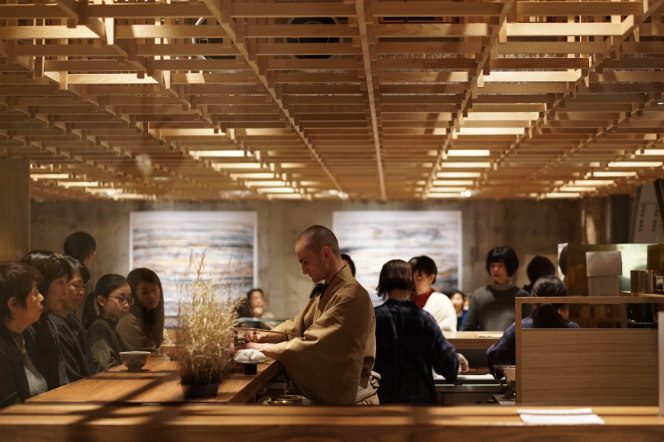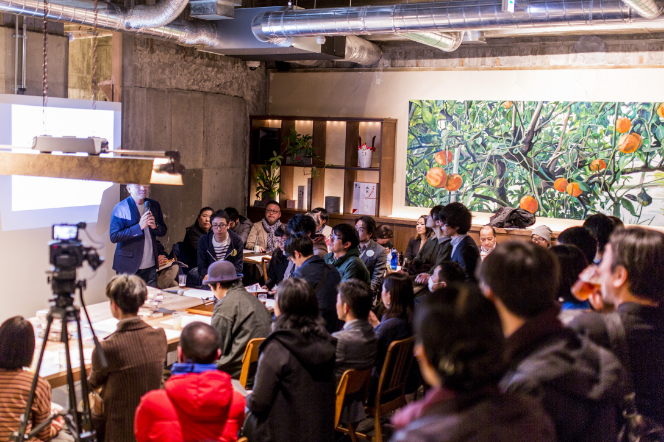TALKING WITH
LOCALS
Yukiko Ishimura
/ Walnut TreeSpace Coordinator
- NARA
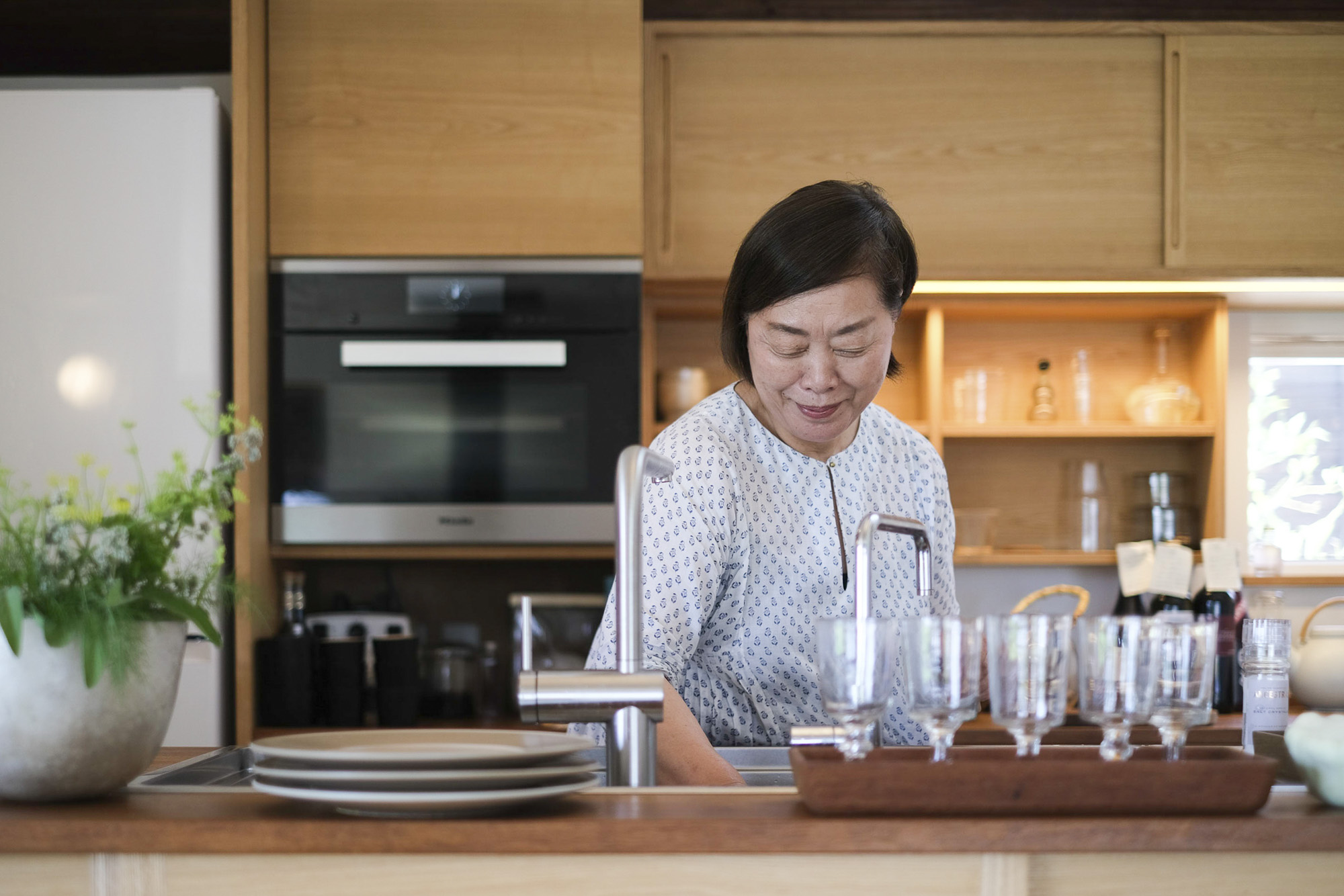
Nara cuisine supervised by "Kurumi no Ki" to invigorate your mind and body while traveling
MIROKU Nara's breakfast and cafe bar menus are overseen by the popular Nara cafe "Kurumi no Ki," which is visited by many people from outside the prefecture. The menu, which incorporates an abundance of Nara's local ingredients, is popular as a meal that will invigorate the mind and body while traveling. We spoke to Yukiko Ishimura, representative of Kurumi no Ki, about the thoughts behind the MIROKU Nara menu and the charms of Nara.
A trip to Nara begins with breakfast
──MIROKU What kind of thoughts does Mr. Ishimura put into the food at Nara?
Since we were staying in Nara, we wanted to provide a meal that would give us a taste of Nara, incorporating plenty of local ingredients. The Japanese breakfast will feature delicious Yamato pork with good quality fat and local vegetables steamed in a bamboo steamer, as well as miso soup with Yamato gluten, which is individually hand-grilled. For Western food, we offer sausages and salads made with Nara herbs, and delicious raisin bread* from Mia's Bread in Naramachi. We hope that guests will be able to recharge their energy with breakfast and enjoy their time at each of their destinations.
*The breakfast menu is subject to change.
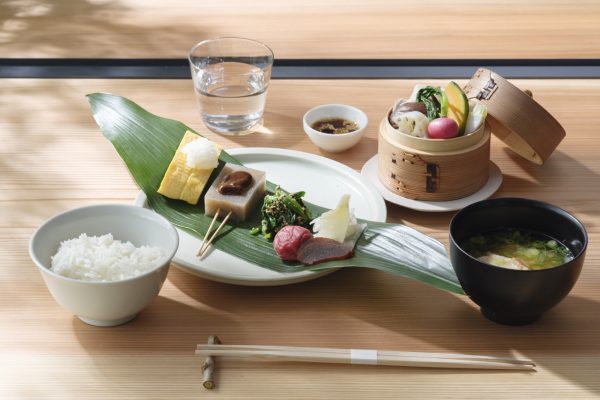
--How should you enjoy dinner during your trip to Nara?
In recent years, the number of restaurants run by talented young chefs has increased in Nara. The idea that "Nara has delicious food" is becoming more widespread, which makes me very happy as a resident of Nara. Please be sure to visit their restaurants for dinner.
──MIROKU In Nara, nyumen noodles served as a late-night snack are very popular!
This nyumen is made with somen noodles from Miwa, the birthplace of somen noodles. Many people enjoy an evening walk after dinner, so we thought up a midnight snack to relax in at the hotel. Nyumen noodles are carefully made with the pure water of Miwa, making them healthy and perfect for a midnight snack while traveling.
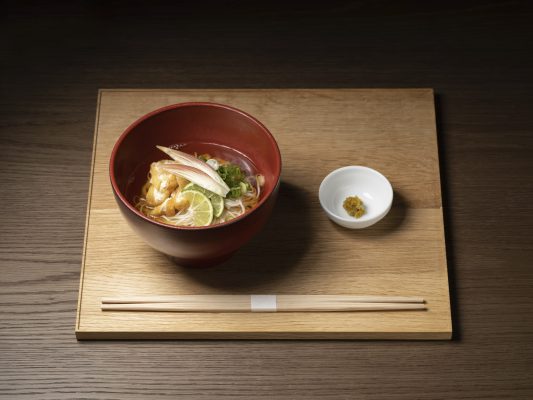
Enjoy the best view at MIROKU Nara
──MIROKU Nara is located between the Naramachi area and Nara Park. What kind of place is it from your perspective, Mr. Ishimura?
It's a great location. Actually, before I was approached about this hotel, I was curious about the building and went to see it. It has a great view overlooking the greenery, and there are rooms where you can see the five-story pagoda of Kofuku-ji Temple nearby. It's a peaceful building that exudes the relaxed atmosphere of Nara.
──When you sit at CAFE & BAR MIROKU TERRACE, which faces the bank of Araki Pond, most of the scenery you see is green. It's a place where you can feel the openness of Nara, so I hope you'll come to the terrace at least once during your stay.
From the terrace you can see mother and baby deer coming to play. It's a view that really makes you feel like "Nara is a great place."
-- Traveling tends to be a packed schedule, but the key to a trip to Nara seems to be its "easy-going" nature. Where can you take a walk to experience the easy-going nature of Nara?
Nara has large grasslands at places like the Heijo Palace ruins and Nara Park, where both people and animals roam freely. The grasslands are open and not enclosed by fences, so if you take a leisurely stroll across the grasslands, you'll feel the generosity of the people, who are welcoming and say, "Come on in, everyone!" About 1,300 years ago, the capital city of Heijo-kyo was established, and temples and shrines were scattered throughout the rich nature, accepting and healing people's prayers. Since then, you can feel that the culture and atmosphere that have been passed down from generation to generation are connected to the city of Nara today.
--In Nara, it feels like life and the historic shrines and temples are all connected.
Old things will eventually crumble, but I feel that Nara often leaves things as they are until the very last moment. It's wonderful that they want people to remember the beauty of Nara's past. The sight of deer relaxing in the park and crossing the street at traffic lights will probably continue into the future. I may be boasting too much, but Nara is a truly profound and wonderful place.
There are places in the South that say "Welcome!"
In the Ishibutai area of Asuka Historical Park, you can see a different world from the old days when you are in Nara city. If you have time, please go south to Yoshino. There are still landscapes that make you feel that Nara is the birthplace of Japan, and you will encounter landscapes that will make you feel like you have come all the way here.
Enjoy Todaiji Temple's Nigatsudo Hall on a different route
Get up early and walk around the banks of Sarusawa Pond, looking at Kofuku-ji Temple before heading to Nigatsu-do Hall. Nigatsu-do Hall is a relaxed place that is open 24 hours a day, and offers a panoramic view of the city of Nara. On your way back, we recommend taking a stroll along the Whispering Path. After checking out, be sure to walk through the shopping street to the station. The shopping street is the city itself, so you can experience Nara culture in a way that is different from the temples and shrines.
Savor the unique Japanese sweets of Nara
Manmando Tsunenori Nobuto Manju is a historic confectionery made from "buto," a plant said to have been brought back by Japanese envoys to the Tang Dynasty. The taste has been passed down through generations of Manmando, which was founded at the end of the Edo period, and the chewy texture of the fried rice flour is delicious. Kashiya is also recommended, and they make sweets using seasonal ingredients to bring out the best in the ingredients. The sweets change depending on the season, so be sure to enjoy the unique tastes of the time of year you visit.
Yukiko Ishimura / Walnut Tree
Space Coordinator
Born in Takamatsu, Kagawa Prefecture. In 1983, he opened the cafe and general goods store "Kurumi no Ki" (Horen-cho, Nara City), which grew into a popular store attracting people from all over the country. After that, he worked on a wide range of projects, including producing the Nara Tourist Information Center "Shika no Fune" (Inoue-cho, Nara City) and "Machi no Schule 963" (Marugame-cho, Takamatsu City) in his hometown of Takamatsu City. He is currently based in Nara and produces regional revitalization centers and commercial facilities all over Japan. He has written many books, including "I Dreamed Crazy" (Bungeishunju, 2009) and "How to Grow a Tree Called Yourself" (Heibonsha, 2019).


